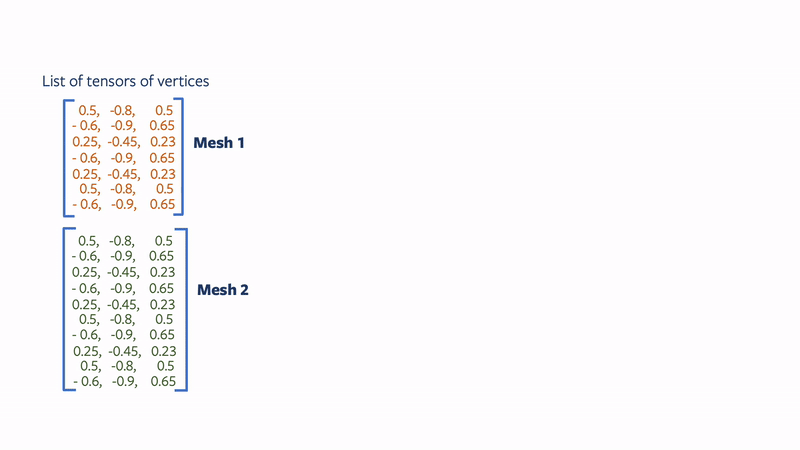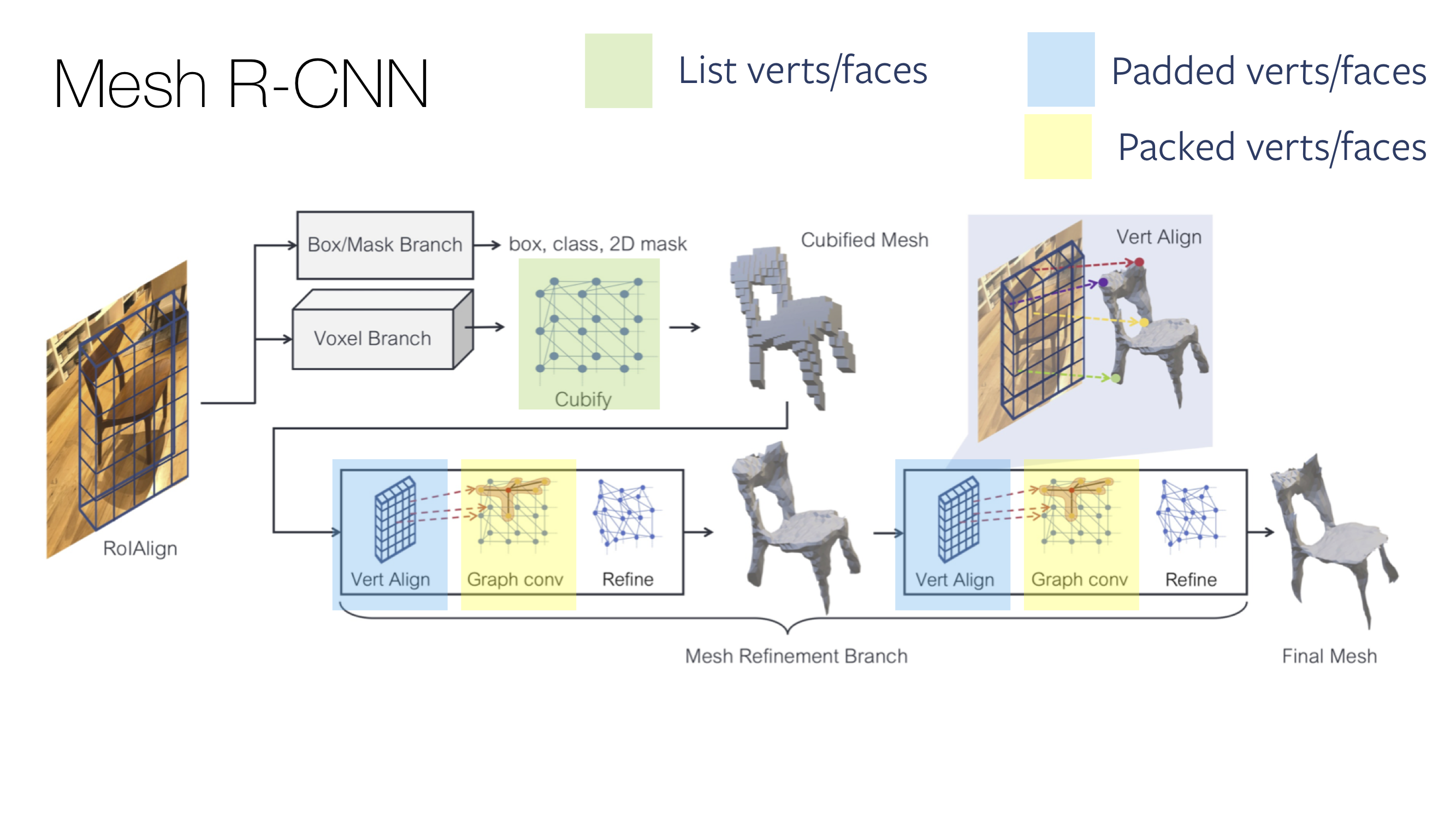Summary: Set up landing page, docs page, and html versions of the ipython notebook tutorials. Pull Request resolved: https://github.com/fairinternal/pytorch3d/pull/11 Reviewed By: gkioxari Differential Revision: D19730380 Pulled By: nikhilaravi fbshipit-source-id: 5df8d3f2ac2f8dce4d51f5d14fc336508c2fd0ea
3.0 KiB
hide_title, sidebar_label
| hide_title | sidebar_label |
|---|---|
| true | Batching |
Batching
In deep learning, every optimization step operates on multiple input examples for robust training. Thus, efficient batching is crucial. For image inputs, batching is straighforward; N images are resized to the same height and width and stacked as a 4 dimensional tensor of shape N x 3 x H x W. For meshes, batching is less straighforward.

Batch modes for meshes
Assume you want to construct a batch containing two meshes, with mesh1 = (v1: V1 x 3, f1: F1 x 3) containing V1 vertices and F1 faces, and mesh2 = (v2: V2 x 3, f2: F2 x 3) with V2 (!= V1) vertices and F2 (!= F1) faces. The Meshes data structure provides three different ways to batch heterogeneous meshes. If meshes = Meshes(verts = [v1, v2], faces = [f1, f2]) is an instantiation of the data structure, then
- List: Returns the examples in the batch as a list of tensors. Specifically,
meshes.verts_list()returns the list of vertices[v1, v2]. Similarly,meshes.faces_list()returns the list of faces[f1, f2]. - Padded: The padded representation constructs a tensor by padding the extra values. Specifically,
meshes.verts_padded()returns a tensor of shape2 x max(V1, V2) x 3and pads the extra vertices with0s. Similarly,meshes.faces_padded()returns a tensor of shape2 x max(F1, F2) x 3and pads the extra faces with-1s. - Packed: The packed representation concatenates the examples in the batch into a tensor. In particular,
meshes.verts_packed()returns a tensor of shape(V1 + V2) x 3. Similarly,meshes.faces_packed()returns a tensor of shape(F1 + F2) x 3for the faces. In the packed mode, auxiliary variables are computed that enable efficient conversion between packed and padded or list modes.

Use cases for batch modes
The need for different mesh batch modes is inherent to the way pytorch operators are implemented. To fully utilize the optimized pytorch ops, the Meshes data structure allows for efficient conversion between the different batch modes. This is crucial when aiming for a fast and efficient training cycle. An example of this is Mesh R-CNN. Here, in the same forward pass different parts of the network assume different inputs, which are computed by converting between the different batch modes. In particular, vert_align assumes a padded input tensor while immediately after graph_conv assumes a packed input tensor.
